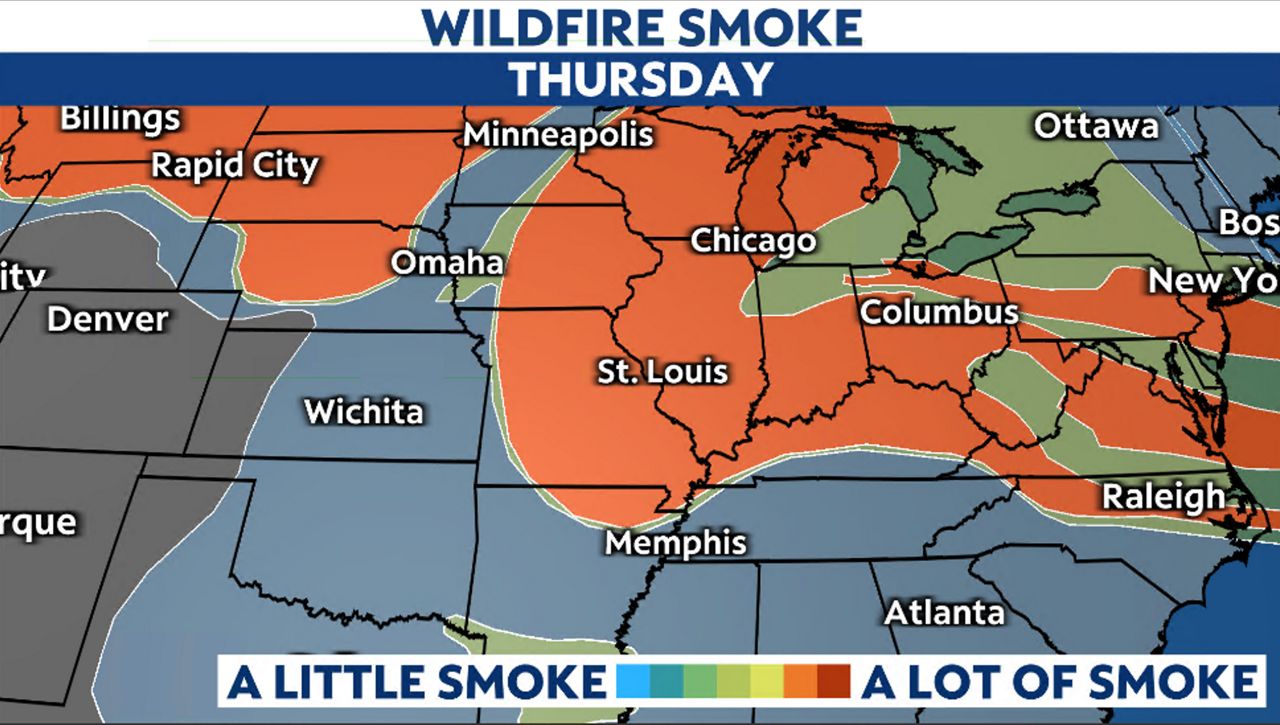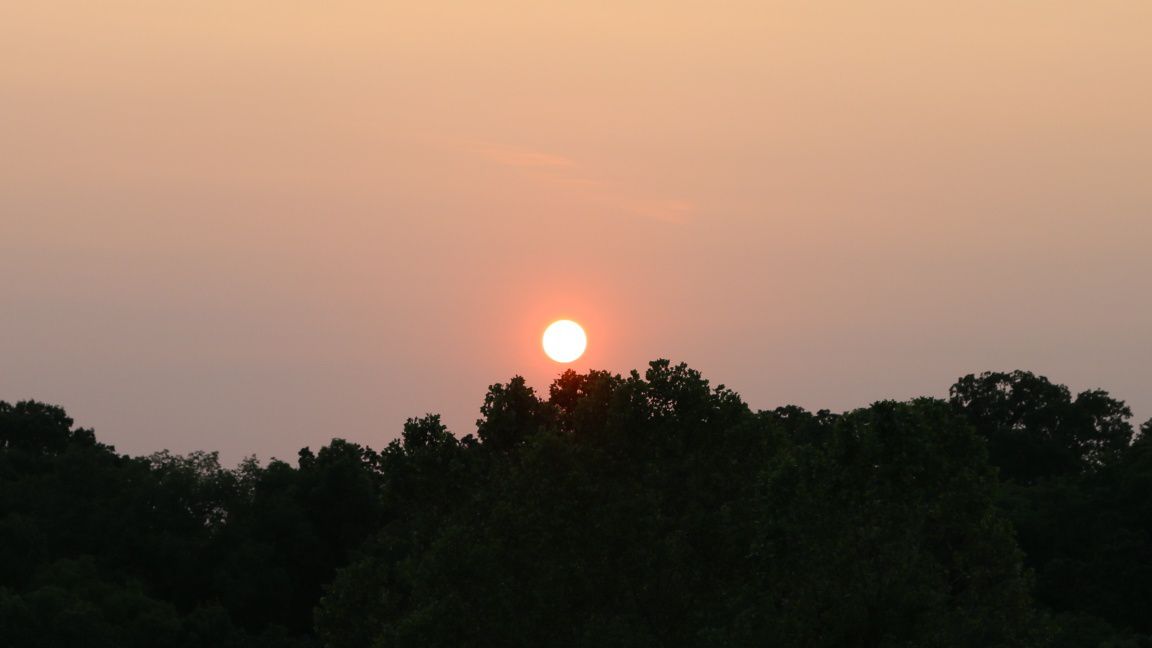We’ve seen lots of sunshine these past few days, but the normal blue skies with a bright sun have seemed somewhat muted or hazy. The sunrises and sunsets have also appeared more vivid than usual.
What You Need To Know
- Smoke from the Canadian wildfires has been transported to the St. Louis area
- Our blue skies are shrouded in a milky white haze
- Expect vivid colors at sunrise and sunset
This is all because of wildfires that are burning in Canada. The smoke from the wildfires is being transported south into the St. Louis region and while it isn’t harmful to people as it is in the upper atmosphere, it does create hazy conditions in our skies.
According to the NOAA, wildfire season occurs in this part of Canada when snow melts and dead vegetation is uncovered. This vegetation becomes fuel for fires.
Here is what the thick wildfire smoke looked like in Downtown Calgary on May 16, 2023.
This year's prolonged drought in that region has created more fires and helped the season begin earlier.
Sunrises and sunsets are more colorful
Sunrise and sunset may look brighter and more colorful, which has to do with the smoke. Smoke is elevating these particles in the atmosphere; the greater number of these particles means more light scattering.
Electromagnetic spectrum
All electromagnetic radiation is light, but we can only see a portion of that, in the visible part of the spectrum. This means we can only see light at certain wavelengths. All colors have a different wavelength at which they are visible.
Think “ROYGBIV” for the colors of the rainbow with red having the longest wavelength and violet the shortest.
Why the sky is blue
When the sun shines through the atmosphere, it is like a light passing through a prism. The sun's light passes through the gases in our atmosphere, dispersing it in different directions.
Our atmosphere mostly scatters the short wavelengths made up of blue light. This blue light reaches our eyes, which is why the sky looks blue during the day.
The sun is at its lowest point in the sky during sunrise and sunset, so the light has to pass through more of the atmosphere. This scatters longer wavelengths or the colors of red and orange.
The smoke from the Canadian wildfires has created more particles in the atmosphere. During times of sunrise and sunset, the light must travel through more of the atmosphere, scattering the smoke. This creates more vivid red and orange colors.
Our team of meteorologists dives deep into the science of weather and breaks down timely weather data and information. To view more weather and climate stories, check out our weather blogs section.




